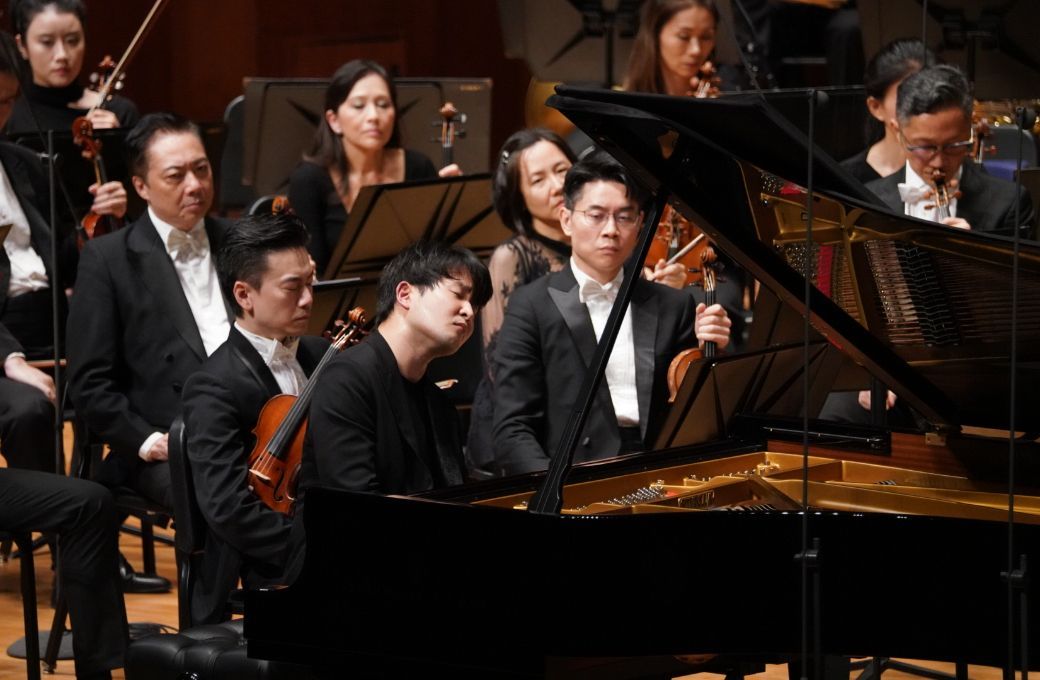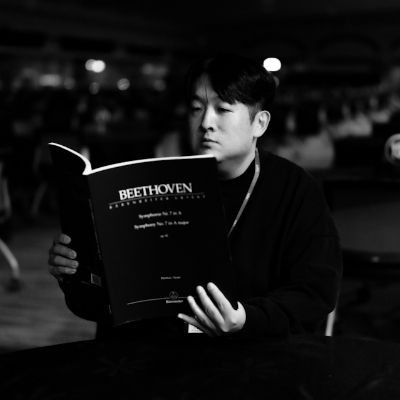At the Seoul Arts Center, Lio Kuokman and the Hong Kong Philharmonic set out their stall with two crisp modern postcards before turning to Tchaikovsky’s big‑ticket pairing of the First Piano Concerto and the Fifth Symphony. Unsuk Chin’s Subito con forza snapped open like a pane shattering to reveal an unexpected corridor of air; after that electric fracture, however, the sudden hushes and hairpin turns never quite tightened into a single torque. Rhythmic oppositions were duly neat, the sly grin only half‑shown, Beethoven glinting at the periphery; as an opener it felt almost decorous, an argument tidily filed rather than flung.
Charles Kwong’s Festina lente, given its Korean premiere, made a bolder impression. Over a slow, tensile string carpet, woodwind cells and brass slides were filigreed with minute care so that ‘fast’ and ‘slow’ overlaid one another like a double exposure. The grain of the sound proved unusually tactile for a contemporary score and the percussion’s incremental heat lifted the room; the composer’s walk‑on for a bow added a theatre of occasion that helped the piece land without special pleading.
Pianist Yekwon Sunwoo’s Tchaikovsky 1 declared its priorities from the first chord. The introduction breathed broadly – Maestoso reconceived at an Andante span – so the piano stood at orchestral scale. Pedalling left short halos that layered resonance; the attack was generous yet rounded, the rhetoric less about speed than about architecture. Folk‑tinged paragraphs in the exposition gained heft rather than bustle; the development’s climb and canonic tussle were argued cleanly, although the athletic pages – octaves and cadenza‑like writing – did not always melt into the larger arc.
The slow movement settled to measured pace, dynamics tiered with care and the pedal stitching notes in a supple thread; a faint, persistent machine whirr from stage right briefly scuffed concentration, making the span feel slower than it was, but the quick central episode was trimmed to the millimetre. The finale found its spring: standard tempi, articulate rhythm, the final blaze contained rather than gaudy. One missed, at times, a freer palette and quicksilver reflexes; in exchange one received weight, order and an honest, unforced arrival, helped by Kuokman’s keen ear for micro‑adjustments of tempo and balance.

After the interval, the Fifth Symphony provided the evening’s centre of gravity. Kuokman conducted from memory, husbanding breath at the start and letting low strings and clarinet speak plainly before the first subject stepped off – unhurried yet never slack – with each phrase handing ballast to the next. In the Andante the horn sang on a steady, centred line, oboe and clarinet trading tint with discretion; even when the strings inflated, their blend held and Kuokman’s shaping of the lull before and after the big eruptions allowed silence itself to carry tension.
The Valse kept its surface poise while admitting an undertow of solitude, its gliding rubato and carefully angled hemiolas drawing the mask and the face into close proximity; pizzicati in the low strings worked like a rhythmic spring beneath the floorboards. The finale moved by accretion rather than dash. Timpani propelled the design; brass chose focus over wallpaper. A few crests skewed the brass‑to‑everything‑else ratio, and some early tuttis wore a rounded attack; the line never buckled. By the coda the release felt earned, the rhetoric consistent with the method.
What registered above all was a preference for legibility of line, rhythmic spine and long‑breathed argument, an ethos increasingly audible in Seoul’s strongest nights and one that quickens Tchaikovsky without clouding him. Kuokman’s approach, new to this stage, read as fully consonant with those cleaner, high‑resolution priorities: excitement gleaned from structure rather than shove.


